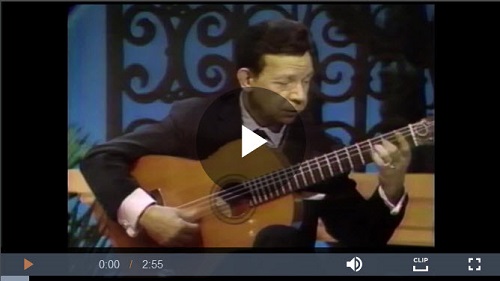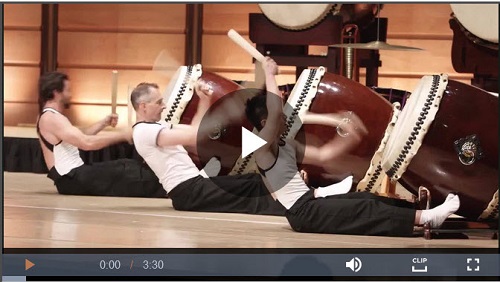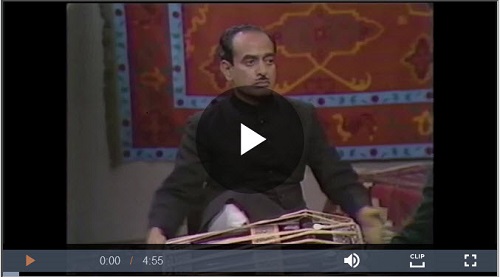Music Traditions from Around the World
In this featured content, we highlight five music traditions from around the world, to offer an insight in to the cultures and the people that created them.

In this featured content, we highlight five music traditions from around the world, to offer an insight in to the cultures and the people that created them. From the soulful sounds of Blues music to the lively melodies of Klezmer music, the thunderous rhythms of Taiko, the intricate plucking of Flamenco guitar, and the meditative tones of Ragas, each video below allows us to explore a different culture’s music, to understand its origins, and understand what makes it so unique.
Tocaores
The music tradition of Flamenco has existed for hundreds of years, believed to have emerged at the end of the 18th century, and is most commonly associated with the Andalusian Roma (Gypsies) of Southern Spain. The music is complex, and incorporates myriad different musical techniques to create its distinctive style, such as dance (baile), poetry singing (cante), and polyrhythmic hand-clapping (palmas), to name but a few. Despite the lengthy history of Flamenco, the introduction of the Flamenco guitar only occurred around 170 years ago, in the middle of the 19th century. Usually made of cypress wood, the Flamenco guitar is constructed to be different from the classic guitar; it is usually not as heavy, and has a narrow body. These features are what help to create the distinctive sound of the Flamenco guitar; it’s percussive, the sound brighter and more austere than that of a classical guitar. In addition to the differences in the construction of the instruments, Tocaores, or Flamenco guitarists, use very specific skills to achieve the distinctive sound associated with Toque, the Flamenco guitar technique. Characteristics of Tocaores’ playing include strumming with outward flicks (Rasgueado), pulling or plucking the strings (Tirando), and finger tapping on the soundboard at the area above or below the strings (Golpe). Flamenco was officially declared one of the Masterpieces of the Oral and Intangible Heritage of Humanity by UNESCO in 2010.
In this clip, world renowned, self-taught Flamenco guitarist Sabicas performs a solo. Born in Pamplona in the early 1910s, Sabicas began playing the Flamenco guitar at age five, and started performing just 2 years later. An integral part of bringing Flamenco music outside of Spain, Sabicas has been labelled as one of the greatest Flamenco guitarists in the world. He pioneered techniques like the Alzapuas (hitting the strings with the thumb in a percussive manner) that are still used today, and that are considered crucial in Toque performance.
Taiko
Taiko, a range of Japanese barrel shaped drums, have long held an important role in Japanese culture, in which they are believed to have been present as early as the 6th century. There are several different recorded uses for Taiko, from being used in battle as a way to frighten and fend off enemies, through to their role in religious ceremonies and in temples throughout the country, as a way to call out to the gods. In the performing arts, Taiko have played an essential role across different forms of traditional Japanese theatre. Their earliest use in the arts is noted as being used in Gagaku, the early incarnation of Japanese court music, as well as in Noh theatre, one of the oldest dramatic arts in the world which emerged in the 14th century. Later on in the 16th century, Taiko would become a key feature of Kabuki troupes, which mix traditional Japanese dance with dramatic theatrical performances.
The modern ensemble form of playing Taiko is known as kumi-daiko, or group Taiko. These group performances are a relatively new way of performing Taiko; and in recent years the number of groups practising and performing this specific art form has grown in number and geographically. One of these groups is Taikoz, which was founded in 1997. The Taikoz ensemble has performed in Japan, Paris, Bangkok, Taiwan, Abu Dhabi, and in the USA where they headlined the Taiko Nation concerts at the 2014 World Taiko Gathering. This clip is from Taikoz 20: Land-Sea-Sky-Home, the 20th anniversary show from the group, in which Taikoz perform a wide range of taiko, percussion, and voice pieces.
Klezmer Music
Klezmer is a music tradition that dates back centuries, and originates from the Ashkenazi Jews of Central and Eastern Europe. Designed for dance and festivity, Klezmers, or Klezmorim, the performers of this genre, would typically be hired to play during special occasions in their communities, such as weddings, B’nai Mitzvah, or other joyous celebrations - the music to the popular hora dance is the possibly the most well-known example of the Klezmer tradition. Whilst Klezmer music can be traced back through many centuries, the music has also been influenced by and incorporates other music traditions from around the world, including those of countries like Russia, Poland, Romania and Germany, and also that of Roma culture. This integration of different musical cultures continued into the twentieth century, with some American Klezmer musicians taking inspiration from Jazz, which resulted in their music sounding distinctive against the earlier traditional Klezmer music which originated in Europe. The mixture of cultural influences had a direct effect on the kinds of instruments used by Klezmers, as they began to adopt the instruments of choice of other musical traditions. Whilst the violin and the clarinet are often the two main components of a Klezmer performance, musicians have also adopted instruments such as the bass, cello, flute, accordion, and the dulcimer.
In this clip we see performance footage of the Budapest Klezmer Band, or BKB, who formed in 1990 and play the traditional Jewish Klezmer music, We also hear from band member Kohán István, who discusses the versatile nature of Klezmer music, and how it’s essential for the performers to have fun themselves, in order to bring joy to their audience.
Ragas
A Raga, in the classical music of India, is a structure for improvisation. It is an important part of creating music, playing a significant role in music theory throughout India, as well as through Bangladesh and Pakistan. The aim of a Raga is to create a unique atmosphere, to “colour the mind” and move the listener to emotion, through the performance. Commonly lasting around half an hour, a Raga may be a completely improvised piece, or it may join together improvisation and existing sequences that have been committed to memory by the musician. Traditionally Ragas have been tied to seasons and times of day, often meaning that specific Ragas could only be performed at certain times of the year. In modern performance this limit of performance options is mostly disregarded, but rather mentioned in performance programmes or notes. In addition to the ties to time and seasons, Ragas have also commonly been believed to bring on environmental activity, as they were thought to be able to summon rain, or to cause spontaneous fires.
In this clip, we watch a performance of a ‘battle hymn’ by the brothers Dagar, and hear from Asian Arts expert Faubion Bowers on the tradition of ragas. Bowers offers both translation and interpretation on the performance, and also comments on the beats used throughout the piece.
Blues of the Deep South
Blues music originated in the deep south of the United States in the late 19th century. It was developed by African American musicians who drew upon their musical heritage and combined it with the musical traditions of the European settlers. Blues music was born out of the struggles and hardships of the African American community, and its lyrics often reflected the experiences of poverty, discrimination, and injustice. The music was initially played on instruments such as the guitar, banjo, and harmonica, and it later evolved to include the piano and other instruments. The Deep South was a crucial location for the development of Blues music, and its influence can be heard in many genres of music that followed.
This clip sees Alberta Hunter perform her song Get Yourself a Working Man in front of a live audience. Alberta Hunter achieved international acclaim during her career as a Blues singer across multiple decades in the 20th century. Born in Memphis in 1895, she began her singing career in Chicago, where it is often reported she ran away to at the age of 11. Hunter began to tour in 1927, performing her songs in the US and in Europe, and continued to tour during the Second World War in a bid to raise the spirits of the troops. After the death of her mother in 1957, Hunter retrained as a nurse, and worked in healthcare for the next 20 years, until she returned to performing at the age of 82. Hunter was posthumously inducted in to the Blues Hall of Fame in 2011.
Read LJ's eRef eReview of Bloomsbury Drama Online here
Image Credits
Homepage Carousel Image: Hugh Sitton
SPONSORED BY
Add Comment :-
RELATED
ALREADY A SUBSCRIBER? LOG IN
We are currently offering this content for free. Sign up now to activate your personal profile, where you can save articles for future viewing














